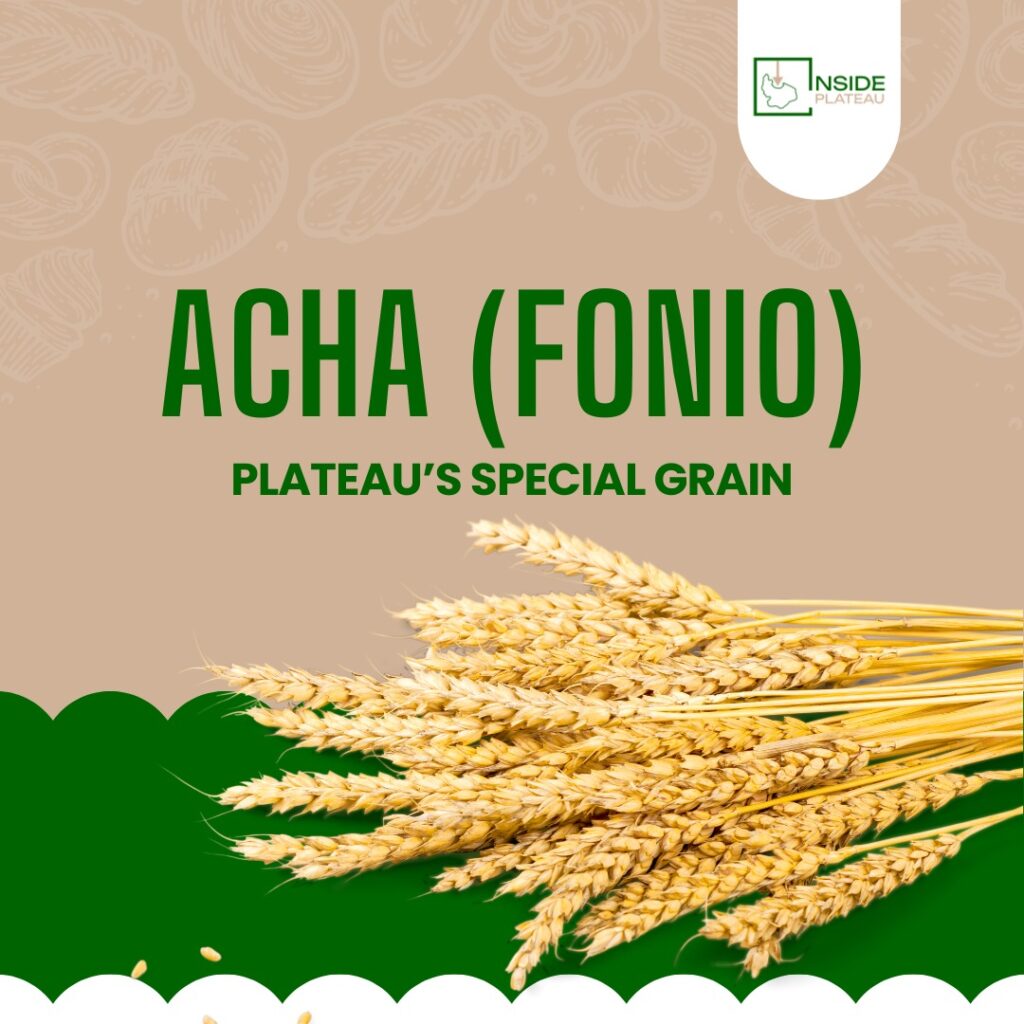On a cool morning in Plateau State, when the white fog cling to the mountains and kitchen fires generate smoke, more often a pleasant aroma strongly drifts through the air. It’s either the smell of warm Acha porridge or Acha pudding. Mothers stir this nutritious meal gently, while children eagerly await their calabashes or bowls of pudding or porridge. Even the farmers, before heading to the fields, usually take time to fuel up on this highly nutritious grain. For many families across Plateau State, this tiny cereal is far more than just food; it is a source of comfort, identity, and wealth.
A Special Grain with Deep Roots
Acha, or Fonio (as it is also known), is a remarkably resilient cereal that thrives exceptionally well in the beautiful climate of Plateau State. Being the largest producer of Acha in Nigeria, Plateau State holds a very strong claim to this grain. Back in the days, it was mistakenly nicknamed the “cereal of the poor,” but Acha has deservedly gained special recognition as one of West Africa’s most valuable and ancient grains. For centuries, Acha (Fonio) has been carefully nurtured by Plateau State farmers, cherished in our local kitchens, widely praised for its unique health benefits, and holding deep cultural, nutritional, and economic importance.
Cultivation: A Story of Resilience
Acha (Fonio) belongs to the cereal grass family (Poaceae) and it possesses a special ability to thrive under conditions that other grains would woefully fail. This special grain is mostly cultivated in the cooler climate of the State, and mostly on the poorer or less fertile soils.
Remarkably, this special grain matures very fast. There are some varieties that can be ready for harvest in as little as 6–8 weeks of planting. Its deep, well-developed root system allows it to withstand drought, making it so invaluable in the face of unpredicted climate change. Farmers value Acha not only for its resilience but also for its reliability: even in poor seasons, Acha always guarantees a harvest.
Acha is sown traditionally using simple, manual hand tools. Although the tiny grains are really difficult and time-consuming to harvest and even process, the he Dehulling and Winnowing process is still largely non-mechanized but the reward is considered worth the effort. Acha is special and has sustained Plateau State communities for generations, ensuring both food security and cultural continuity.
Mangai John, a farmer from Bokkos, said and I quote:
“Acha never disappoints. Even when other crops fail, you can be very sure that Acha will give you something to eat.”
Acha(Fonio)’s Versatility in the Kitchen
One of the special aspects of Acha lies in its versatility. Once it is processed, it can be transformed into a variety of delicious and nourishing dishes. These includes:
i. Acha (Fonio) Porridge (Gwote/Gote): This is a hearty and yummy meal. Gwote is often prepared with spices, local vegetables, and protein like groundnuts or meat. Gwote is one of the state’s richest traditional meals and it cuts across all Plateau State tribes.
ii. Gusgus (Staple Accompaniment): This can be cooked plain, or in a similar manner to rice or couscous, and served with rich stews, fish, or vegetable soups.
iii. Acha (Fonio) Pudding: An easy preparation, typically enjoyed as a breakfast meal with milk, honey, or blended groundnuts.
iv. Flour Substitute: Acha grain can be milled into a fine, gluten-free flour and be used for baking and to prepare “swallows” like Tuwon Acha.
Acha’s texture is mild, and its nutty taste often appeals even to those who are tasting it for the first time. Its quick cooking time also fits perfectly into modern, busy lifestyles.
“In my house, we eat Acha almost every week,” says Ngozi, a trader in Jos. “It cooks so fast, and my children love the porridge. It is healthy and saves me a lot of time.”
Acha’s Rich Health Benefits:
Beyond tradition and taste, Acha is a true nutritional powerhouse. It is naturally gluten-free, and this makes it an excellent option for individuals suffering from celiac disease or gluten intolerance. The grain is richly packed with essential nutrients, including high amounts of fiber, protein, iron, magnesium, zinc, and Vitamin B. Furthermore, it also contains some key amino acids like methionine and cysteine, which are often lacking in other cereals.
Secondly, Acha has a low glycemic index, which is why it is always recommended for managing diabetes and for anyone who’s seeking a source of steady, long-lasting energy.
According to nutritionist Dr. Lydia Davou from the Jos University Teaching Hospital, “Acha is one of the best grains that manages diabetes and boosts our energy naturally. It is highly nutritious but very easy to digest.” For Plateau communities, this grain is not merely a health food trend, it is also a treasured way of life, that is passed down through generations.
A Grain of Heritage and Hope
In Plateau State, Acha is a powerful story of resilience, tradition, and hope. As global interest continues to grow in rich and ancient grains, Acha has the potential to feed and nourish not just local communities, the state, or the nation, but the world at large. With its adaptability which is second to none, it’s rich nutrition, and deep cultural importance, Acha has rightfully earned its deserved title as Plateau’s Special Grain of Life.
🌾 Did You Know?
1. Acha is considered one of the oldest cereals in West Africa, with a cultivation history dating back thousands of years.
2. It is often called the “grain of life” because of its remarkable ability to grow even on poor soils and in harsh, dry climates.
3. On the Plateau, Acha is a key part of celebrations and traditional meals, symbolizing hospitality and abundance.
4. Beyond Nigeria, Acha is increasingly found on the shelves of major health food stores in Europe and America.
The next time you visit Plateau State, ensure you seek for Acha. Taste its unique flavor, enjoy its incredible health benefits, and discover why this ancient grain remains a beloved symbol of Plateau’s heritage. In every spoonful, you get not just nourishment, but the compelling story of a beautiful people and their land.

